As October begins, Mars is disappearing from the evening sky. If you’re looking from about 15 to 20 degrees south of the equator, you’re getting the best view, with the planet setting around an hour after the sun and almost directly above it. You may be able to see Mars passing by Spica on Monday and Tuesday. You need a clear horizon to your west and probaby binoculars too to see them. Mars won’t reach conjunction with the sun until next month. Then, it’ll take a few weeks to reappear in the morning sky.
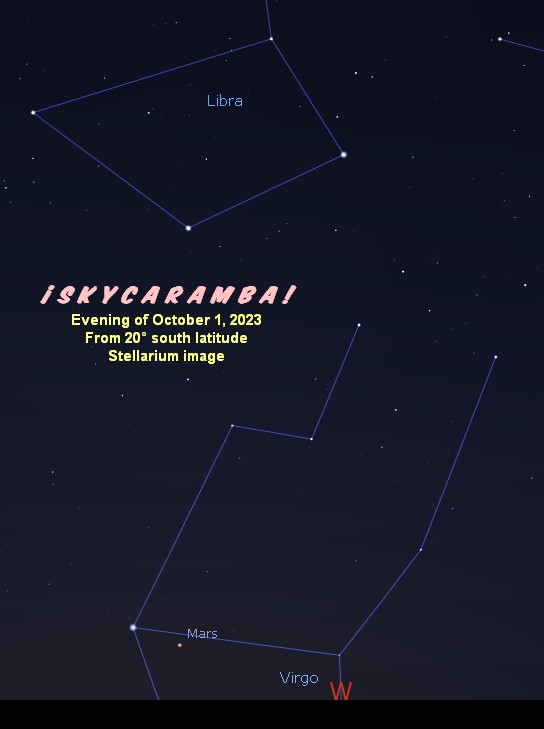
Saturn is high and rising at sunset. It’s retrograde in Aquarius for most of the month. It’s practically stationary when a waxing gibbous moon passes by on the 24th.
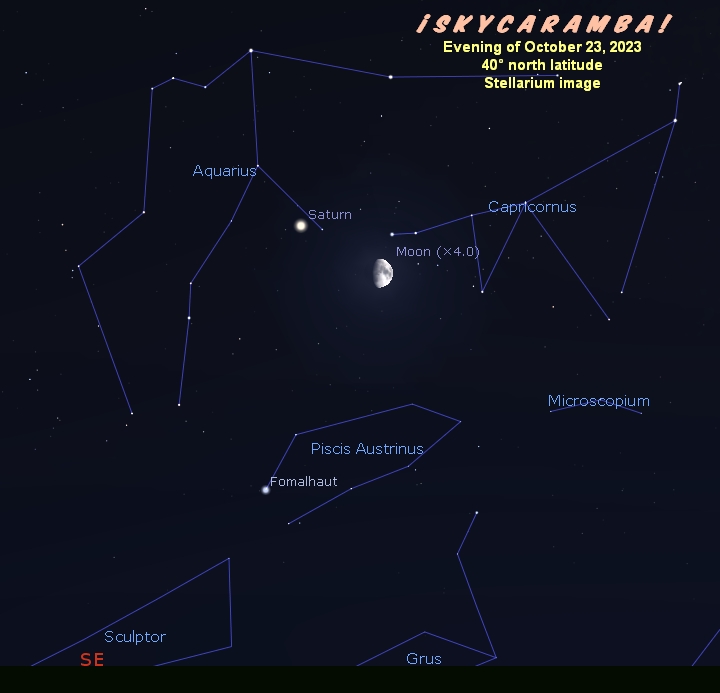
Jupiter and Uranus hold their positions near the head of Cetus the sea monster, rising in mid-evening as the month starts. They rise earlier in the evening as October progresses. The moon is just past full when it passes by on the 2nd. It will be just past full again when it passes by on the 29th. Both planets are moving slowly westward among some dim stars.
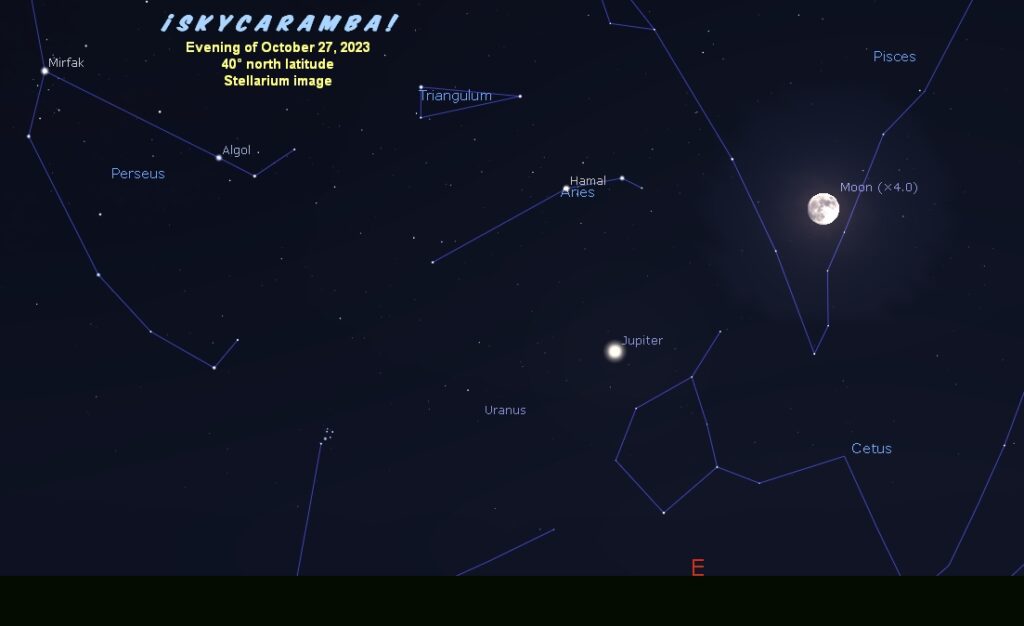
Venus rises mid-morning. It starts October a little west of Leo. It’s passing by Regulus on the 9th and 10th as a waning crescent moon moves through the area. Venus moves on below Leo’s belly after that. It’s at greatest elongation, reaching 46.4 degrees west of the sun, on the 23rd and 24th.
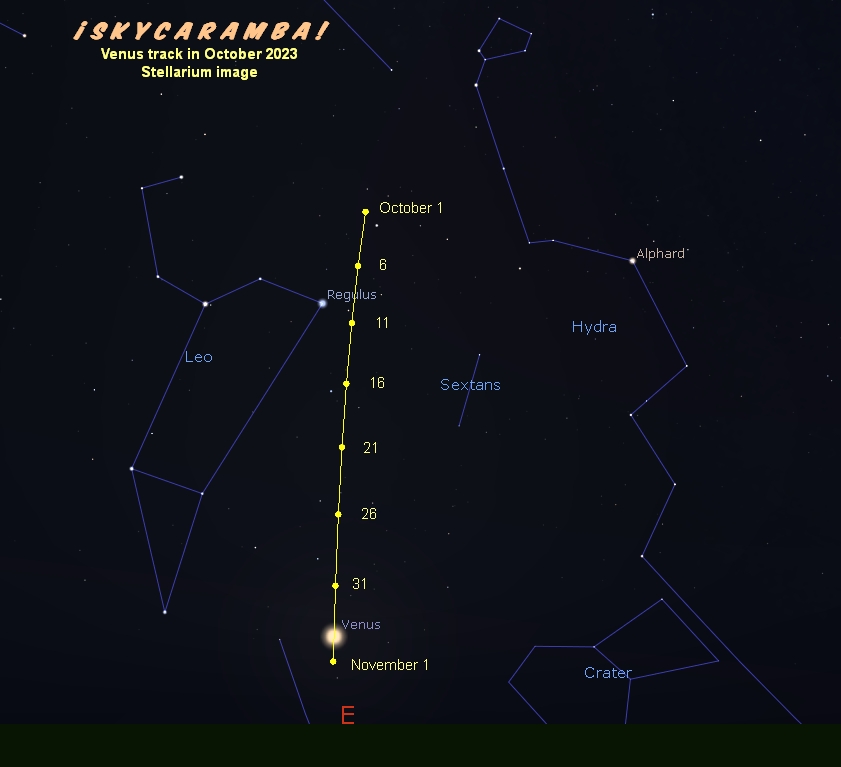
Mercury is right of Leo’s tail in the morning sky at October’s start. The best view is from about 20 to 25 degrees north. The planet heads to superior conjunction on the 20th. Don’t expect it to head quickly from the other side of the sun into easy visibility in the evening sky. Mercury will be in conjunction with impossible-to-see Mars on the 29th.
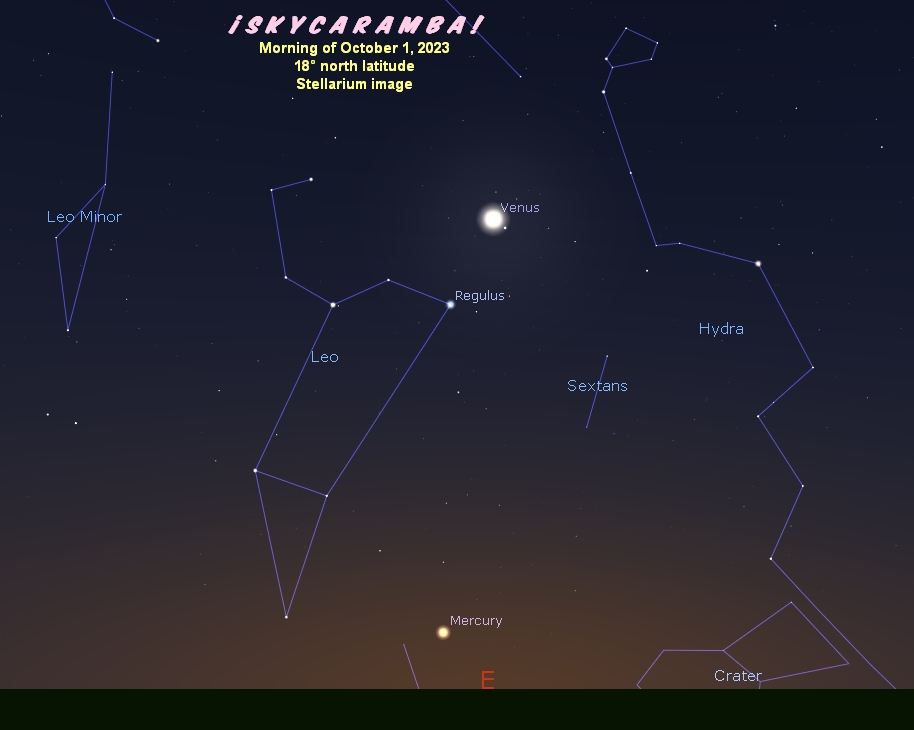
Sirius will be at morning quadrature on October 5. Some astronomers use the opportunity to see how long into the daylight they can see the star. Look for it as sunrise approaches and try to keep track of it past the moment of sunrise. Near its highest in the sky, the star has less atmosphere to shine through before you see it. That gives you a chance to see it for a few minutes after the sun comes up. Your attempt to see it need not be limited to the 5th. Another fun part of the challenge is seeing how much earlier and later than the quadrature date you can see the star with the sun up.
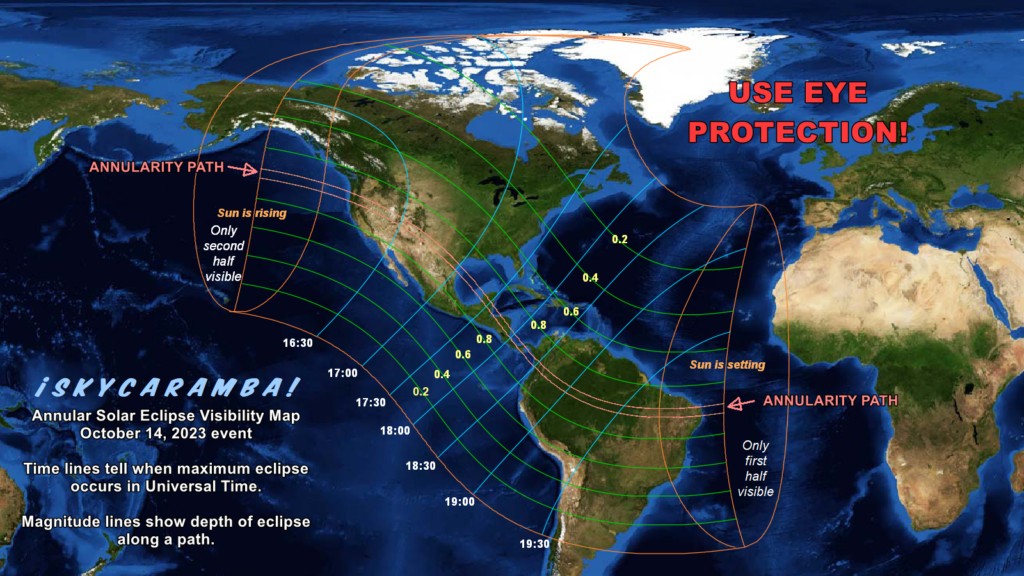
We have two eclipses this month. An annular ecipse of the sun will produce a central track across the western United States, several countries in Central America, and across Colombia and Brazil. Partial phases will be visible from most of the Americas. In an annular eclipse, the moon is too far away to block all of the sun’s disk. So along the central path, a bright ring of sunlight surrounds the moon’s disk. None of this eclipse is safe to view without eye protection. Use only filters made for safe solar viewing. Or project an image of the sun.
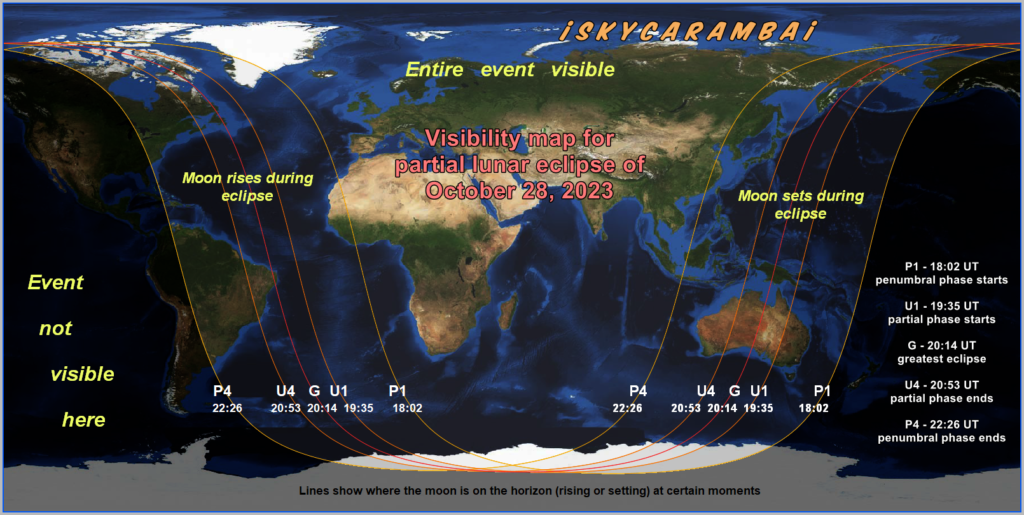
And a partial lunar eclipse will happen on the 28th. No eye protection is needed for this. It’s visible from Africa, Europe, Asia, and Greenland. Australia and some parts of the Americas will see it during moonrise or moonset. Penumbral phase starts at 18:02 Universal Time. You may notice some slight color or shading changes until 19:35 when the partial phase starts. Maximum eclipse is at 20:14. Partial phase ends at 20:53. The penumbral phase ends at 22:26.
The Orionids meteor shower peak is on the 21st. The American Meteor Society says you may see up to 23 meteors per hour. The moon’s at first quarter then. But since it’s setting in late evening as Orion rises, the viewing should be great after midnight. This shower is caused by dust left behind by Comet Halley, which right now is almost as far from the sun as it gets. Its aphelion date will be December 9. The comet being 35 astronomical units from the sun doesn’t necessarily mean we get a poor meteor shower. It depends on how dense the dust trail is. Nobody can predict that.
Moon phases this month: last quarter on the 6th, new on the 14th, first quarter on the 22nd, full on the 28th.
Moon positions: northern lunistice at 28.3° on the 5th, southward equatorial crossing on the 13th, southern lunistice at 28.3° on the 20th, and nothward equatorial crossing on the 26th.
The moon’s apogee is on the 10th at 405,400km. Perigee is on the 26th at 364,900km.
